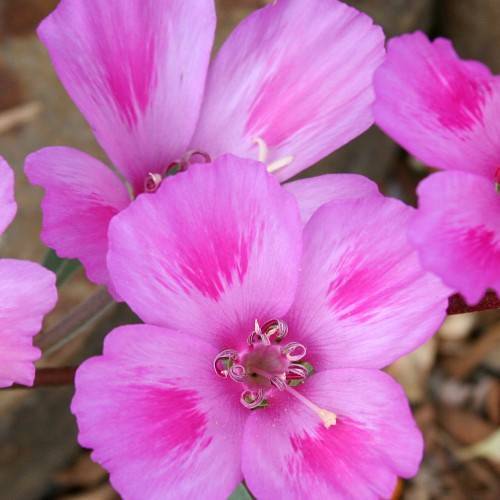
Lindley Clarkie
Clarkia amoena subsp. lindleyi
Cycle:
Annual
Watering:
Average
Hardiness Zone:
2 - 11
Flowers:
Flowers
Sun:
full sun,part shade
Fruits:
Fruits Ready In
Leaf:
Yes
Growth Rate:
Low
Maintenance:
Low
Care Level:
Moderate
watering
Clarkie Fleur-De-Satin plants should be watered 2 to 3 times per week, enough to keep the soil moist. Each time, soak the soil deeply to keep it evenly moist. In hot weather, water even more frequently, up to twice a day. During the winter months, reduce the frequency of watering to once a week or less. You can check the soil moisture by inserting your finger into the soil; if it feels dry, then it’s time to water. Additionally, you can use a moisture meter to ensure the soil has the right amount of water for your plant.
sunlight
For Clarkie Fleur-De-Satin (Clarkia amoena subsp. amoena) plants, the optimal amount of sunlight they require is 6 to 8 hours of full sun a day. In areas with warm climates, they should be placed in the brightest light possible, preferably morning sunlight. They will also adapt to part shade, as long as they have at least several hours of direct, bright light each day. In cooler climates, however, they should be placed in an area of part to full shade.
pruning
Clarkie Fleur-De-Satin (Clarkia amoena subsp. amoena) should be pruned during the late spring or early summer when the plant is actively growing. Prune the plants back by half to approximately 1/3 of their original size to prevent legginess and to encourage bushier, denser growth. Pruning is also necessary for the removal of dead branches or woody growth, which should be done seasonally. Additionally, late winter may be the best time to prune off any dead flowers to encourage an optimal amount of blooms.
